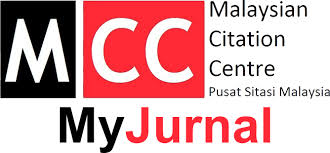الطريقة في ترجمة الآيات المجسمة من القرآن الكريم [METHOD IN TRANSLATING AYAT MUJASSAMAH IN THE QURAN]
Keywords:
Quranic translation، translation methods، Tafsir Pimpinan al-Rahman، ayat mujassamah ترجمة القرآن، طريقة الترجمة، تفسير ڤيمڤينن الرحمن، الآيات المجسمةAbstract
Abstract: The research is to identify the Quranic verses that existed ayat mujassamah، then will be followed by explanation of the method of translation chosen by the translator Abdullah Basmeih in his book named Tafsir Pimpinan al-Rahman، the eleventh edition (2000) published by Dar Al-Fikr in Kuala Lumpur، it is either literal or communicative. Finally، clarification of the method of translating ayat mujassamah for the readers who require reading the Quran in their daily lives. In this regard، the research adheres to the qualitative method since the translation book is present and popular with many Muslims since the spread of the process of translating the Quran. Therefore، the research collected a surah from the Qurani surah in which ayat mujassamah were included and then placed it in the list one by one. The search has captured 19 surah، which contain 22 ayat mujassamah. Among these، six words are considered literal translations (27.27%)، and the remaining 16 verses are communicative translations (72.73%). The communicative translation is considered a clear translation، as scholars agreed upon that it is understandable without the readers being tempted to interpretations between the literal translation ambiguous translation because it may cause readers to multiple meanings without the valid evidence.
ملخص :سعى البحث إلى التعرف على الطريقة في ترجمة الآيات المجسمة من القرآن الكريم فيلي من بعدها بيان طريقة الترجمة قام بها المترجم محمد عبدلله باسميح في تفسير ڤيمڤينن الرحمن الطبعة الحادية عشرة (2000) أخرجه دار الفكر بمدينة كوالا لمبور إما أن تكون حرفية كانت أم معنوية. وأخيرا توضيح ترجمة الآيات المجسمة واضحةً كانت أم غامضةً لدى جميع القراء الذين يستلزمون عليه في حياتهم اليومية. تمسك البحث في هذا الصدد بالمنهج الكيفي على أن كتاب الترجمة موجود ومشهور عند كثير من المسلمين منذ انتشار عملية ترجمة القرآن ولذك قام البحث بجمع سورة من السور القرآنية التي فيها الآيات المجسمة ثم وضعها في القائمة واحدة بواحدة. وقد التقط البحث بتسع عشر سورةً التي فيها اثنان وعشرون آية مجسمة. ومنها تشير إلى ست الكلمات تعتبر ترجمة حرفية (27.27 %) والباقية ست عشر آيةً ترجمة معنوية (72.73%). إن الترجمة المعنوية تعتبر ترجمة واضحة كما اتفق عليها العلماء على أنها مفهومة دون أن يميل القراء إلى تفسيرات أو تأويلات بين الترجمة الحرفية ترجمة غامضة لأنها قد تدعو القراء إلى معاني متعددة ليس فيها أدلة صحيحة.













